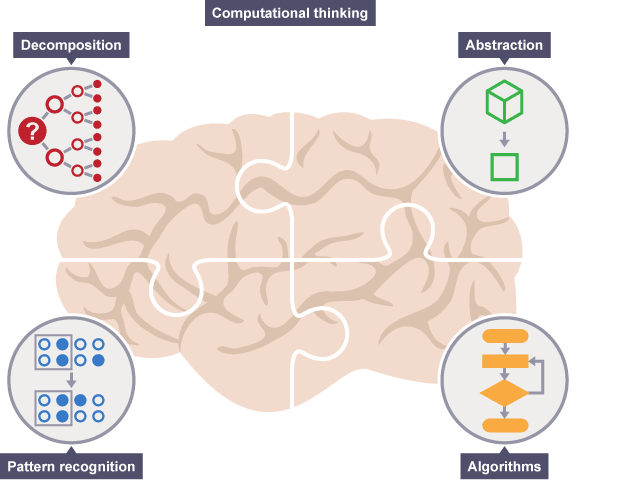

Introductory
Computational thinking is an approach to problem-solving, system design and understanding human behaviour using the fundamental concepts of computer science (Wing, 2006). It builds on the computational ability and limitations, choosing the appropriate way to state a problem, modelling the relevant aspects of a problem, and using the most efficient way to solve a problem that an individual may not accomplish. Computational thinking has four key techniques: decomposition, pattern recognition, abstraction, and algorithms. Decomposition is the process of breaking down a problem, clarifying the properties of each part, and making it clear how to break down a task, thus reducing the cognitive difficulty. Pattern recognition is the process of identifying similarities and differences between the parts that have been split to provide a basis for subsequent predictions. Abstraction is the exploration of the general patterns behind forming these patterns. Algorithms provide step-by-step solutions to similar problems. Computational thinking allows a seemingly tricky problem to be reformulated into a problem that knows how to be solved.
Computational thinking is a thought process that is an essential tool for humans to solve problems. It helps people control computing devices through computational thinking, not letting people think like a computer. This kind of thinking can exist independently of computers, the Internet and other technologies. Unlike the inherent recursive thinking of humans, computational thinking is recursive, top-down and self-iterating and is more logical and regular. Computational thinking can approach problems from multiple perspectives and can be based on the ability to handle big data to obtain more holistic results.
Computational thinking is not only for scientists but can be an essential skill for everyone. By learning and mastering operating systems, people can optimise their life like an operating system optimises a computer. People can also gain a clearer understanding of the management of projects or tasks by learning software engineering and thus gain a deeper understanding of the needs of others. In academic life, people can follow computational thinking and break down learning tasks according to dimensions, such as chapters and topics, to end up with numerous small goals. Using this thinking makes it easy to implement specific knowledge points and test the learning effectiveness so that people can give feedback and make adjustments in time. Applying computational thinking to work can reduce the probability of making mistakes and improve work efficiency. In an ever-escalating market, computational thinking can help to adapt to future employment market.